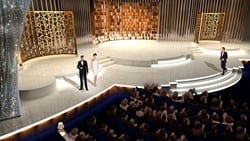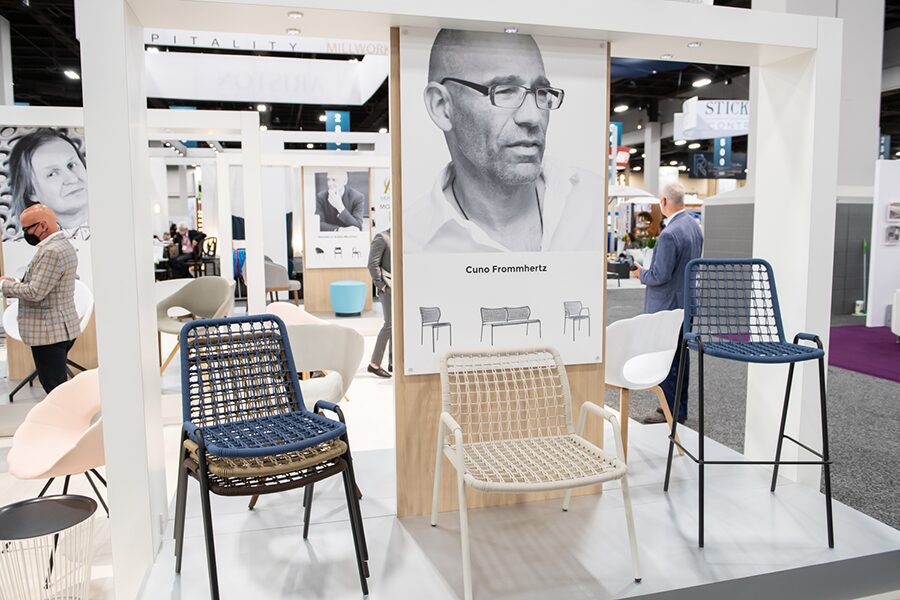 Between all the hoopla of swag suites, oxygen facials, workout regimens from pole dancing to kettle bells, red carpet gaffs and, yes, finally the awards themselves, it’s easy to forget that-in order for there to be award shows-there must also be sets.
Between all the hoopla of swag suites, oxygen facials, workout regimens from pole dancing to kettle bells, red carpet gaffs and, yes, finally the awards themselves, it’s easy to forget that-in order for there to be award shows-there must also be sets.
Otherwise, where would Jennifer Aniston stand poised to present before Brad & Angie? Where would Kanye West shame George Bush or interrupt Taylor Swift? Where would Tina Fey and John Stewart accept award after award after award with quirky grins?
For the second year in a row, architect and designer David Rockwell (who also designed the Kodak Theater itself) has taken on the challenge of setting the stage for the Academy Awards. And the job is not a simple one: his design must create the aesthetic foundation for the entire show without overshadowing and also work functionally from a producorial point-of view. Luckily, Hospitality Design (HD)Â got a sneak peek at the model, renderings, and concepts behind this year’s creation.
 Rockwell obviously did something right last year because the show’s producers call rehiring the designer “a no-brainer.” And some innovative elements have remained the same: Last year, the seating was reconfigured to feel more intimate. It will emphasize that “sense of community” again, according to Rockwell.
Rockwell obviously did something right last year because the show’s producers call rehiring the designer “a no-brainer.” And some innovative elements have remained the same: Last year, the seating was reconfigured to feel more intimate. It will emphasize that “sense of community” again, according to Rockwell.
The stage will have two levels, one for presenters and one-about 18 inches taller-for big music performances. Also, Swarovski crystals will once again grace the stage, this time in the form of a 60-by-100 foot crystal curtain (and eight swings) with 16 additional inches of topaz and pear-shaped crystals “to emphasize shape,” Rockwell explains.
But this year, the set is inspired by L.A.’s abstract modernist decoration in colors like platinum, topaz, smoky brown, and clean white. Elegant sparkles pervade, as if the whole set were made up of the same Harry Winston gems donning every famous neck.
Three rotating platforms (the central one, at 30 feet, offering an enormous bold statement) are enclosed by walls that will act both as backdrop and projection surfaces. The center LED screen will play movies from which presenters will literally appear. A cyclorama (or somewhat panoramic background) is comprised of columns of fabric.
But Rockwell seems most enthusiastic about the use of light reflective mirrors from frosted to beveled to create a sense of “very deep space,” especially as they relate to an enormous multi-part Venetian blind-style set piece that can lower in and out.
Either way, the stars won’t be the only things to shine bright.
See an animated version of the set.


